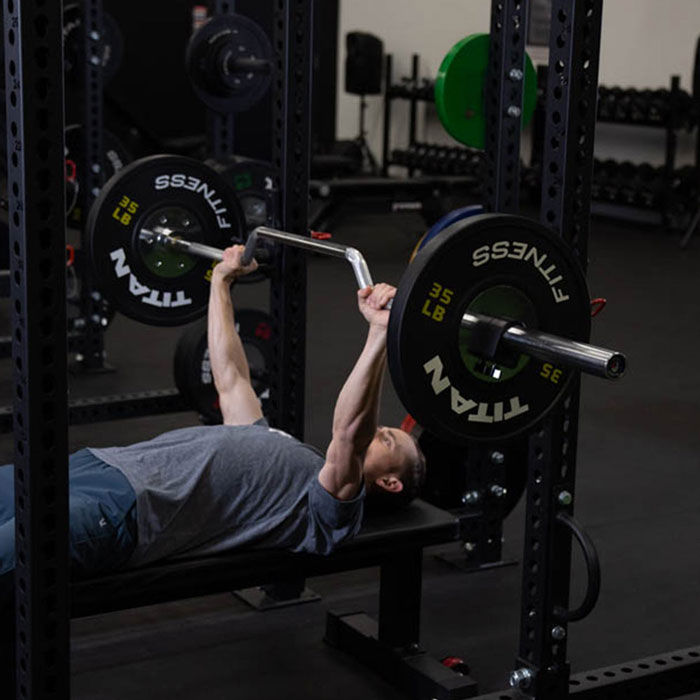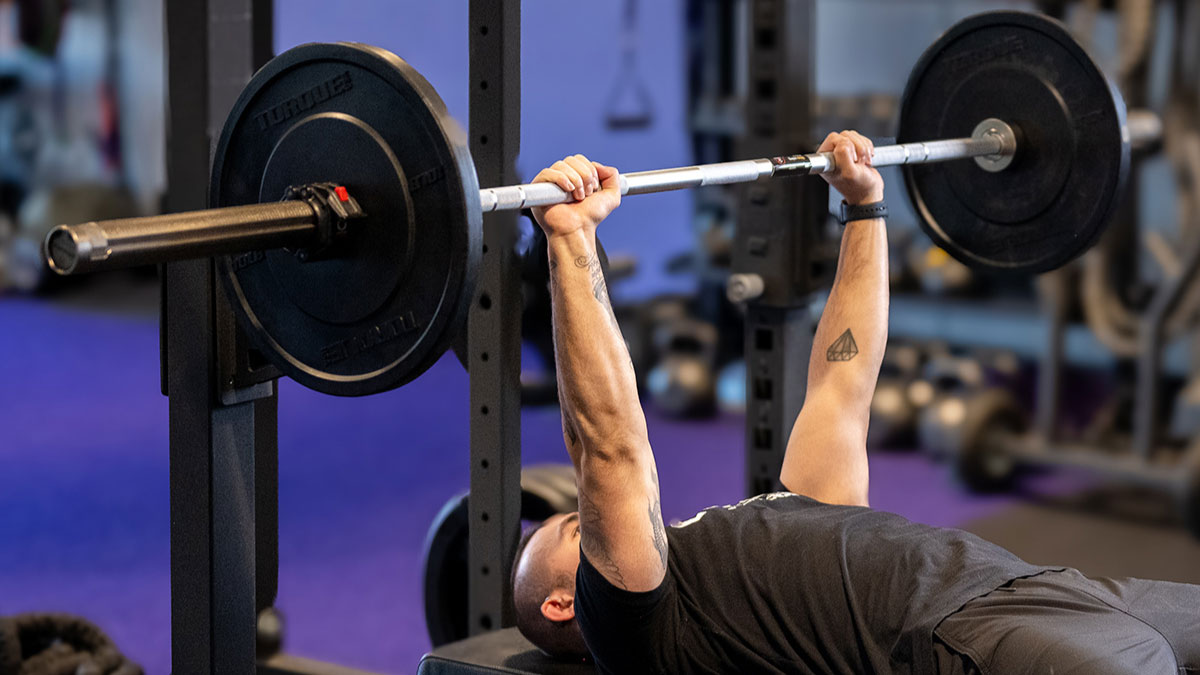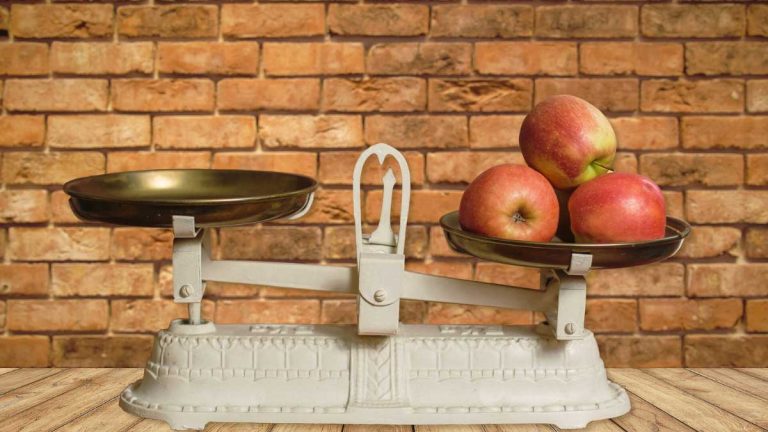How Much Does a Bench Press Bar Weigh? Full Guide
The bench press bar is a fundamental piece of equipment in strength training and weightlifting. Understanding its standard weight is crucial for accurately tracking progress and maintaining proper form during exercises.
Standard Bench Press Bar Weight
A standard bench press bar weighs 45 pounds (20.4 kg) for men and 35 pounds (15.9 kg) for women[1][3]. This standardization ensures consistency across gyms and competitions, allowing lifters to accurately measure their progress.
Types of Bench Press Bars and Their Weights
| Bar Type | Weight | Primary Use |
|---|---|---|
| Olympic Bar | 45 lbs (20.4 kg) | Competition/Standard |
| Women’s Bar | 35 lbs (15.9 kg) | Female Athletes |
| Training Bar | 22 lbs (10 kg) | Beginners |
| Power Bar | 45 lbs (20.4 kg) | Powerlifting |
| Swiss Bar | Varies | Multi-grip Training |

Bar Construction and Specifications
The standard bench press bar features specific characteristics:
- Length: Approximately 7 feet long[1]
- Material: High-grade steel construction
- Weight Capacity: Up to 1,620 pounds depending on quality[1]
- Grip Diameter: 28-29mm for standard bars
Quality Indicators
Tensile Strength Ratings:
- Below 150,000 PSI: Entry level
- 150,000-180,000 PSI: Good quality
- Above 180,000 PSI: Professional grade[7]
Bar Components and Design Features
Understanding the anatomy of a bench press bar helps lifters make informed decisions about their equipment choices and proper usage.
Knurling Patterns
The knurling pattern plays a crucial role in grip security and lifting performance:
- Center Knurl: Present on power bars for stability
- Outer Knurling: Standard feature for hand placement
- Knurl Marks:
- Inner marks at 32 inches apart
- Outer marks at 36 inches apart
Sleeve Construction
The bar’s sleeves are essential components that affect performance:
- Rotation Mechanism: Bronze bushings or needle bearings
- Sleeve Length: 16.25 inches standard
- Loading Surface: Typically chrome-plated
- Collar Width: 2 inches standard
Weight Distribution and Balance
The weight distribution of a bench press bar follows specific principles:
Core Weight Distribution
- Center Section: 30% of total weight
- Sleeve Section: 35% each (70% combined)
- Balance Point: Perfectly centered for optimal lifting
Load Capacity Zones
| Zone | Distance from Center | Max Load Rating |
|---|---|---|
| Inner | 0-4 inches | 100% capacity |
| Middle | 4-8 inches | 95% capacity |
| Outer | 8+ inches | 90% capacity |
Material Composition
The material quality directly impacts bar performance and durability:
- Steel Alloy: Chrome-moly steel or stainless steel
- Finish Options:
- Bare steel
- Chrome coating
- Zinc coating
- Cerakote
Maintenance and Care Guidelines
Proper maintenance ensures longevity and optimal performance of your bench press bar.
Daily Maintenance
Basic Care Protocol:
- Wipe down after each use
- Store in a dry environment
- Check for loose sleeves
- Inspect knurling integrity
Long-term Maintenance
Quarterly Maintenance Tasks:
- Deep cleaning with nylon brush
- Bearing lubrication
- Rust inspection
- Sleeve rotation check
Bar Selection Guide
Choosing the right bench press bar depends on several factors:
Experience Level Recommendations
| Experience Level | Recommended Bar Type | Weight Range |
|---|---|---|
| Beginner | Training Bar | 15-35 lbs |
| Intermediate | Standard Olympic | 45 lbs |
| Advanced | Competition Grade | 45 lbs |
| Professional | Specialized Power Bar | 45 lbs |
Usage-Specific Considerations
Competition Training:
- IPF-approved specifications
- Precise weight tolerance
- Certified calibration
General Fitness:
- Durability priority
- Cost-effectiveness
- Versatile application
Common Misconceptions
Several myths persist about bench press bars:
“All bars weigh the same” – This is incorrect. Weights vary based on design and purpose.
Fact-Based Clarifications:
- Weight variations exist between manufacturers
- Temperature affects bar performance
- Coating impacts overall weight
- Age can affect bar weight
Frequently Asked Questions
General Bar Weight Questions
Q: Do all Olympic bars weigh 45 pounds?
A: No, while standard Olympic bars weigh 45 pounds, there are variations including women’s bars (35 lbs) and training bars (15-35 lbs).
Q: How accurate is the weight of a bench press bar?
A: Competition-grade bars have a weight tolerance of +/- 0.1%, while commercial bars may vary up to +/- 2%.
Q: Can bar weight change over time?
A: Yes, factors like wear, damage, and rust can slightly affect a bar’s weight over time.
Weight Calculation Guide
Standard Weight Calculations
When calculating total lift weight, use this formula:
$$ Total Weight = Bar Weight + (Plate Weight × Number of Plates) $$
Example Calculations:
- Standard Bar (45 lbs) + Two 45 lb plates = 135 lbs
- Women’s Bar (35 lbs) + Two 25 lb plates = 85 lbs
Competition Standards
International Powerlifting Federation (IPF) Requirements:
- Bar weight tolerance: +/- 0.25%
- Total weight including collars: 25kg (55 lbs)
- Regular calibration mandatory
Bar Safety and Usage Guidelines
Weight Capacity Considerations
Maximum Load Guidelines:
- Entry-level bars: Up to 500 lbs
- Commercial bars: Up to 1,000 lbs
- Competition bars: Up to 1,500 lbs
- Specialized bars: Up to 2,000 lbs
Safety Protocols
Pre-lift Inspection:
- Check collar security
- Verify plate alignment
- Inspect bar integrity
- Confirm weight distribution
Advanced Training Considerations
Bar Speed and Performance Metrics
Optimal Bar Path Analysis:
- Vertical displacement
- Horizontal deviation
- Time under tension
- Bar speed velocity
Special Applications
Specialized Training Scenarios:
- Rehabilitation protocols
- Sports-specific training
- Power development
- Technical mastery
Key Takeaways
The bench press bar is a sophisticated piece of equipment with various specifications and applications. Understanding its weight, construction, and proper usage is essential for both safety and performance optimization. Regular maintenance, proper selection based on experience level, and adherence to safety protocols ensure optimal training outcomes.
Additional Resources
Professional Organizations
- International Powerlifting Federation
- National Strength and Conditioning Association
- USA Weightlifting
Equipment Standards
- IWF Technical Rules
- IPF Equipment Standards
- Commercial Gym Guidelines
Citations:
[1] https://powerliftingtechnique.com/how-much-does-a-bench-press-bar-weigh/
[2] https://www.reddit.com/r/Fitness/comments/1uhbsc/moronic_question_how_much_does_the_bar_weigh_at/
[3] https://blog.warmbody-coldmind.com/guides/how-heavy-is-a-bench-press-bar/
[4] https://riverrunswild.com/blog/2019/1/6/guide-to-barbell-weights-lengths-and-types
[5] https://www.muscleandstrength.com/exercises/barbell-bench-press.html
[6] https://chiliguides.com/guides/guide-to-buying-a-bench-press-rack/
[7] https://barbend.com/how-to-choose-barbell/
[8] https://powerliftingukipl.org/bench-press/
[9] https://seriouslystrongtraining.com/how-to-perfect-your-bench-press-setup/
[10] https://originfitness.com/knowledge-and-advice/choosing-the-right-weightlifting-bar







